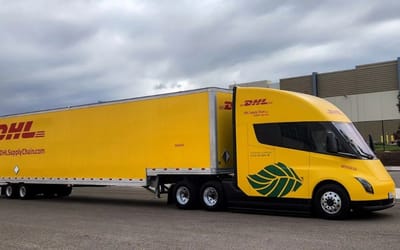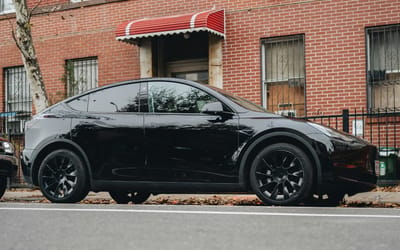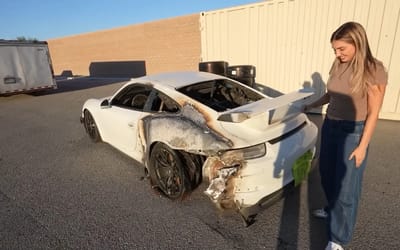Hydrogen HiLux confirmed for 2028 with Toyota’s first all electric HiLux launching two years earlier
Published on Nov 13, 2025 at 9:00 AM (UTC+4)
by Molly Davidson
Last updated on Nov 13, 2025 at 12:00 PM (UTC+4)
Edited by
Kate Bain
Car brands everywhere are choosing sides in the clean-energy race – batteries, hydrogen, or a mix of both.
And now Toyota has shown its hand by revealing the HiLux will follow a two-step plan.
An all-electric HiLux will come first, then a hydrogen fuel-cell HiLux will land after that.
The announcement happened in Australia, but the move will be global.
DISCOVER SBX CARS – The global premium auction platform powered by Supercar Blondie
What Toyota’s 2026 EV HiLux and 2028 hydrogen HiLux really mean
Toyota has confirmed the HiLux will split into two clean-energy paths: a battery-electric version arriving in early 2026 and a hydrogen fuel-cell version in 2028.
It’s Toyota’s clearest signal yet that it isn’t betting everything on one technology – it’s staying in both races.
The EV HiLux is built for everyday work: short trips, predictable routes, easy charging.
Think fleets, trades, and anyone who ends the day back at a depot or driveway.
The hydrogen HiLux is aimed at the opposite crowd: drivers who cover long distances, work in remote areas, or simply don’t have hours to wait around for a big battery to recharge.

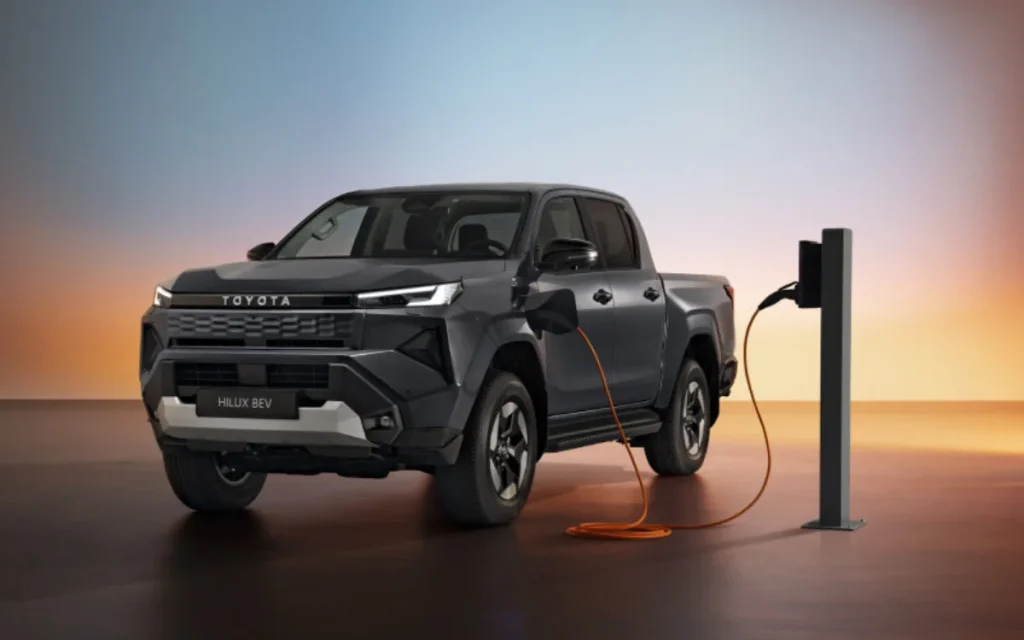
Toyota Australia’s VP Sean Hanley – speaking at the preview event where the announcement was made – says hydrogen has a ‘big future’ in Australia.
Especially for industries where downtime costs real money.
But the message applies globally: the moment hydrogen refuelling networks scale up, fuel-cell trucks become far more useful than battery-only ones in heavy-duty roles.
Prototype hydrogen HiLuxes already tested in the UK give us the first real numbers: a 134kW motor, 300Nm of torque, roughly 370 miles of range, and three high-pressure hydrogen tanks mounted under the tray.

They fill up in minutes and emit only water vapor.
Toyota’s confidence comes from experience.
When the Prius launched in 2001, hardly anyone wanted one.
Now hybrids dominate the brand’s global sales.
Hanley believes hydrogen will follow a similar curve over the next decade.
Why Toyota sees hydrogen as its long-game play
Companies buy huge numbers of trucks worldwide, and those buyers care a lot about lost time.
If a vehicle sits on a charger for hours, the job doesn’t get done.
That’s why fleets are often the first to adopt new tech.
If it saves time or keeps vehicles moving, they’ll switch fast.
Hydrogen fits neatly into that world for a few reasons.
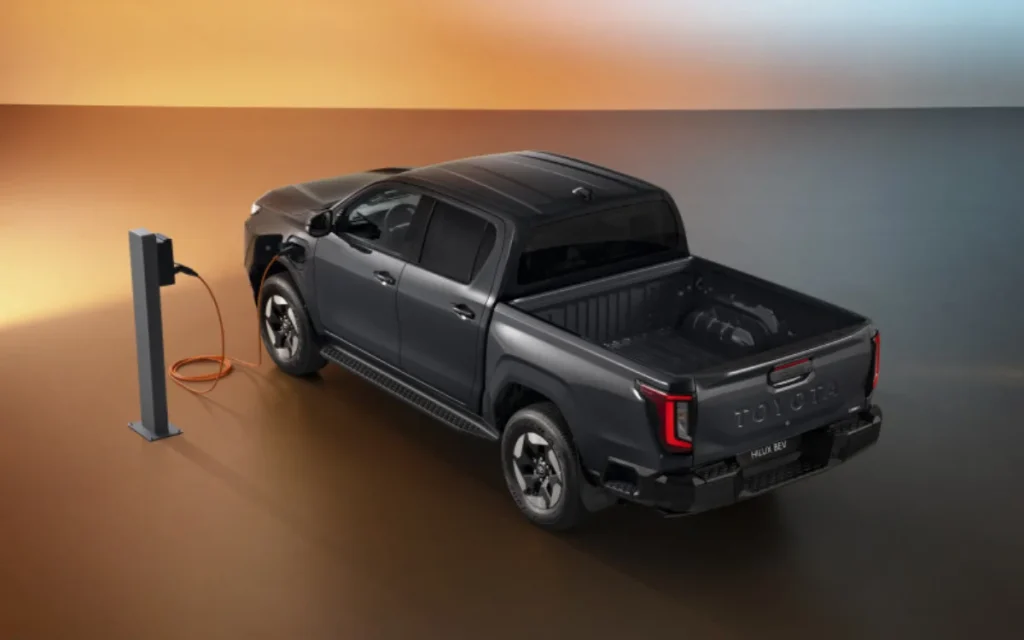
It offers long range, fast refuelling, and consistent performance in heat, cold, and rough conditions – all the things battery trucks still struggle with in heavy-duty work.
Ten hydrogen HiLux prototypes have already gone through late-stage testing in the UK, and hydrogen refuelling hubs are expanding slowly across Europe, Japan, and Australia.
Toyota expects hydrogen to become mainstream between 2035 and 2040.
Not instead of batteries, alongside them.
So the HiLux isn’t going electric or hydrogen, it’s going both.
The 2026 EV model will handle the everyday grind while the 2028 hydrogen model will handle everything batteries still can’t.
Different tech, different strengths, one global strategy: keep the HiLux ready for whatever the future may hold.
DISCOVER SBX CARS: The global premium car auction platform powered by Supercar Blondie
Molly Davidson is a Junior Content Writer at Supercar Blondie. Based in Melbourne, she holds a double Bachelor’s degree in Arts/Law from Swinburne University and a Master’s of Writing and Publishing from RMIT. Molly has contributed to a range of magazines and journals, developing a strong interest in lifestyle and car news content. When she’s not writing, she’s spending quality time with her rescue English staffy, Boof.


